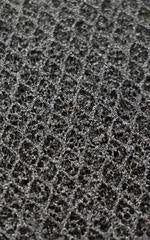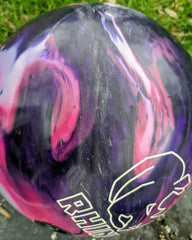If you don’t like reading, watch this video instead.
You can purchase TruCut Conditioner HERE
Bowlers all over the world apply surface to their bowling balls before or after competition. This is critical to maintain performance and bowling ball maintenance. One of the problems with sanding a bowling ball is that it can be very messy. In a recent survey, we found that most people tend to sand their bowling ball dry when done by hand. This is done for several of the following reasons:
- Lack of access to liquids at the time
- Bowlers don’t know how to wet sand a ball
- Bowlers don’t want to risk getting their bowling hand wet
- Wet sanding with water can be hazardous in the bowlers’ area
Understanding The Problem
Sanding a ball dry by hand is effective but comes at a high cost. When sanding a bowling ball dry, you can severely limit the effective use of the sanding pad. This is caused by the high amount of friction created when dry sanding. Take a look at this video for an example.
The friction and heat created from dry sanding will wear away and destroy the sanding media. This is true with all sanding pads. The friction generated from dry contact is the reason you don’t bowl on a completely dry lane. Check this video out.
This is what happens when a ball is thrown on an oilless lane:
You can tell that the friction being created, especially at impact, is destroying the ball.
There is another problem with dry sanding. The dust created by hand sanding is messy and requires additional clean up. In 2018, we introduced TruCut Sanding Pads which are made to sand bowling balls. For 2000 grit and lower, the pads feature a weave that allow for the dust to have somewhere to go.

This gives a few benefits: the pad cuts true to the number written on the pad, the cut is faster, and the pad cuts accurately longer than competitive pads. Without having a place for the dust to go, a pad will cake up, cut inconsistently, and lose cutting ability surprisingly fast. This results in a pad that leaves a surface on a ball that is in fact nowhere near the advertised grit.
Watch the video below for a demonstration. The red pad in the video is Abralon. The grey pad is TruCut. (Credit: Bowl TV)
Another issue with dry sanding…
Click Here to Read the Full Original Article at Creating the Difference – Bowling…
